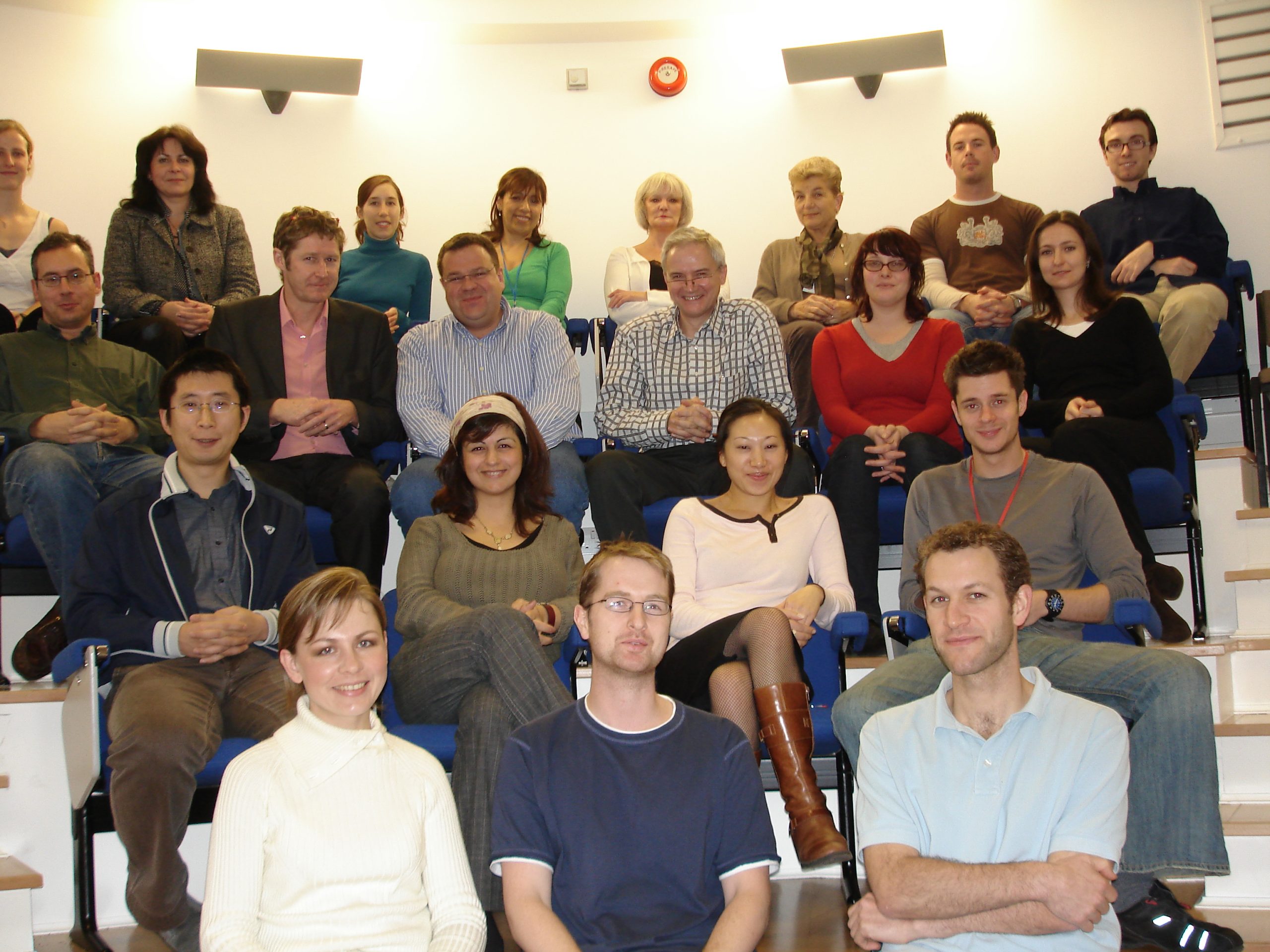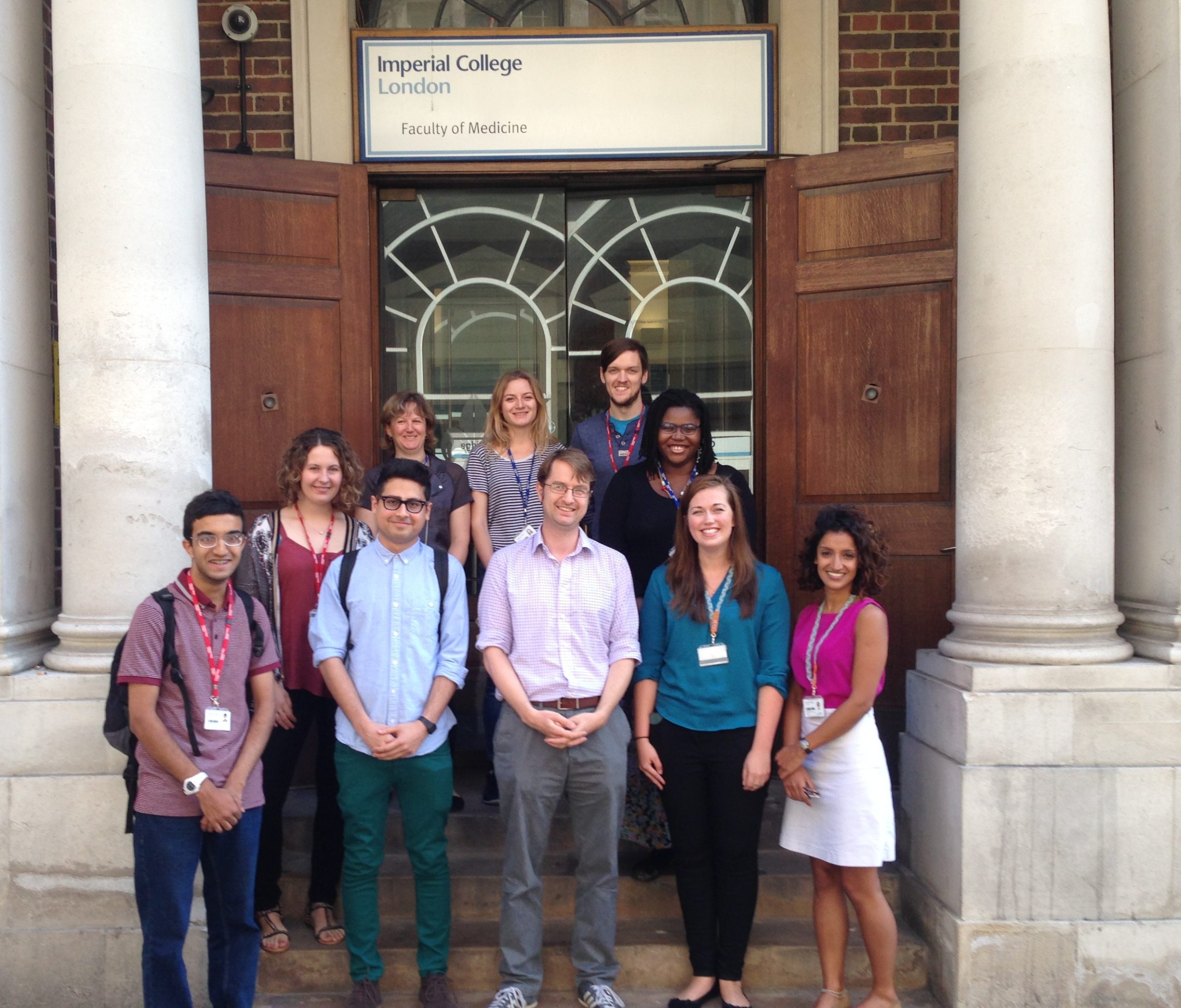
As the Faculty of Medicine prepares for the full decant of the St Mary’s Medical School Building, Professor John Tregoning, Professor in Vaccine Immunology in the Department of Infectious Disease, takes a trip down memory lane, reflecting on almost 20 years spent working in the “site steeped with history.”
On the 1st of August 2024, as part of a wider departmental move, I will leave the St Mary’s Hospital campus having worked there for nearly half my life. As such, it felt like time to reflect.
I first crossed the threshold when the St Mary’s medical school had just merged with Imperial in 1999, visiting friends who were studying there. Admittedly, it was not in an academic capacity. I went to the long-closed, but legendary bar in the basement (allegedly it closed because seeing future doctors heavily inebriated was off-putting to those visiting the hospital). I don’t remember much of that night, a fact I am putting down to time passed, rather than beers consumed.
The red, red bricks of Praed Street
Time moved on, and in 2003 I passed back through the black metal gates and under the bridge linking the St Mary’s Medical School Building with Sir Alexander Fleming’s old lab. Thus beginning a 20-year association with Praed Street. I started there as a newly qualified post-doc (a professional scientist), the ink barely dry on my PhD certificate. At the time, I saw the job as a bit of a gap filler, until I worked out what I wanted to do with my life. Two decades later, that question still remains!
My first boss at St Marys was Professor Peter Openshaw. Time being what it is, he was the age I am now, when he first employed me. Perspectives change, while I now view the mid 40’s as a relatively youthful prime of life, I thought somewhat differently in my mid 20’s. I was working on a virus called RSV, which causes disease in babies and the elderly. When I started working on it, there was no vaccine, and it took until the late 2020s for one to be developed. One of the benefits of time passing is you get to see significant changes in your field – an insight that would have been lost on 20-year-old me.
One feature of the Mary’s medical school is that it worked in siloes. For those of you who haven’t had the pleasure or experience of working at St Mary’s medical school, a quick intro into its somewhat dysfunctional architecture. The original building is three sides of a horseshoe, like a trapezium with the top cut off. This was then completed with an extra block (made of concrete) sometime in the 60s (an assumption I make due to the brutalist style). The newer block somehow squeezes in an extra floor, so has entirely different numbering, including the VD floor, which fans of childish humour enjoy. The final structure makes a square sided loop, with a big hollow in the middle, complete with a net to catch dead pigeons in various states of decay. But rather than being a free-flowing circuit of collaborative scientists, it historically was subdivided into little fiefdoms and woe-betide individuals crossing the iron curtain between them.
Good Times, Bad Times
I was indentured to the Respiratory Medicine department. There were three main supervisors, Peter (my boss), Seb Johnston and Jürgen Schwarze. Being mid-noughties the department was somewhat imbued with the spirit of ‘lad culture’ with lab cricket, massive multiplayer video games sessions, powerlifting, protein shakes and ‘the swim team’. But this was largely background noise, and it was a great time, I learnt (and did) a lot of immunology and got to work with a lovely group of people, with a shout out to my science bestie Dr (now professor) Cecilia Johansson who started at Mary’s two years after me. There were two timepoints seared into my schedule: 12:30 Mondays when the groups all came together and presented, and Thursday morning lab meetings in the third floor meeting room, including a memorable time when a chair collapsed underneath me, mid-discussion. I am extraordinarily grateful to Peter Openshaw for taking a punt on me (given I basically knew no immunology) and for continuing to support me. Thanks to his training and the collaborative environment, my immunology knowledge is much improved!
I then had a brief interlude when I moved labs to South London. I can only put this down to the sleep deprivation derived madness caused by having two children in three years. My most useful career tip from this brief period of exile from St Mary’s is to remember that the science world is really small. Luckily, I didn’t play out the fantasy of saying “screw you everyone I’m out of here.”
Starting my group

I say this was lucky, because little did I know at my time of exit, that I would find myself walking back down Praed Street, three years later, now as a lecturer. But don’t let my Paddington part two deceive you into thinking that I am less adventurous than your average Peruvian bear. On my return, I took up a lab on the fourth floor, one WHOLE floor up from where I had been previously AND in a different department.
My second spell began in 2011 on the 1st April. Draw your own conclusions about the selection of start date. It’s worth noting that my PhD viva fell on the same somewhat inauspicious day of the year! And in the intervening 13 years since returning to Mary’s my research group has really taken off, and there has been a succession of fabulous people who have worked with me in the intervening spell. I am completely indebted to Professor Robin Shattock with whom I have shared a lab for 15 years and who recruited me as a lecturer and latterly to Professor Wendy Barclay who took over as head of department in 2019, guiding it, us and me through the last five turbulent years.
The second time round as an ‘old-timer’, I have been more adventurous about where I spend my time in the building, not only spending time on floors three and four, but occasionally drifting down to two and very rarely (and bravely) up to five! One place I did spend a lot of time, was down in the basement, where the bar was. Sadly, the word ‘was’ doing some heavy lifting here, in the intervening time the bar had shut, and it had been turned into a lab. I have spent many hours in what was once the gent’s toilet; and they say scientific careers lack glamour.
Say Hello, Wave Goodbye
It is therefore with a sense of poignancy that I am approaching the final weeks at St Mary’s. There have been a lot of funny memories here, many of which are unrepeatable! Some of the printable highlights include a student pretending to be a spaceman by wearing a bin lid; signing a particularly earnest student up for a ladder safety course; persuading another of the team to autoclave a bottle of rotting media which stank out the whole lab for a week and the unmentionable blue bin. But the nostalgia is tempered by memories that are a product of working in a 100 year old building: ceilings that flood at the merest sight of rain, toilets that refuse to flush, a piece of chewing gum stubbornly clinging on to the urinal grill for the last 15 years, dead pigeons trapped in the netting designed to stop them flying into the air-con units (though this has led to the remarkable opportunity to watch a falcon eating its kill on said nets) and enough stained floor and ceiling tiles that one of the postdocs was able to sell a calendar’s filled with photos of them.
It is a building and site steeped with history. Everyday I walk past the blue plaque commemorating Fleming’s discovery of penicillin; we regularly have seminars in a room named after Roger Banister (who broke the four minute mile, for those of you lacking in general knowledge as one of my students); and there are reminders of many of the other great scientists. But in the end, change must come, and I am looking forward to moving to the South Kensington campus of Imperial. The good news for me is that this isn’t really a new workplace – as I did my PhD there even longer ago than I moved to St Mary’s. As they say, plus ca change, plus c’est la meme chose – the more it changes, the more it’s the same thing.